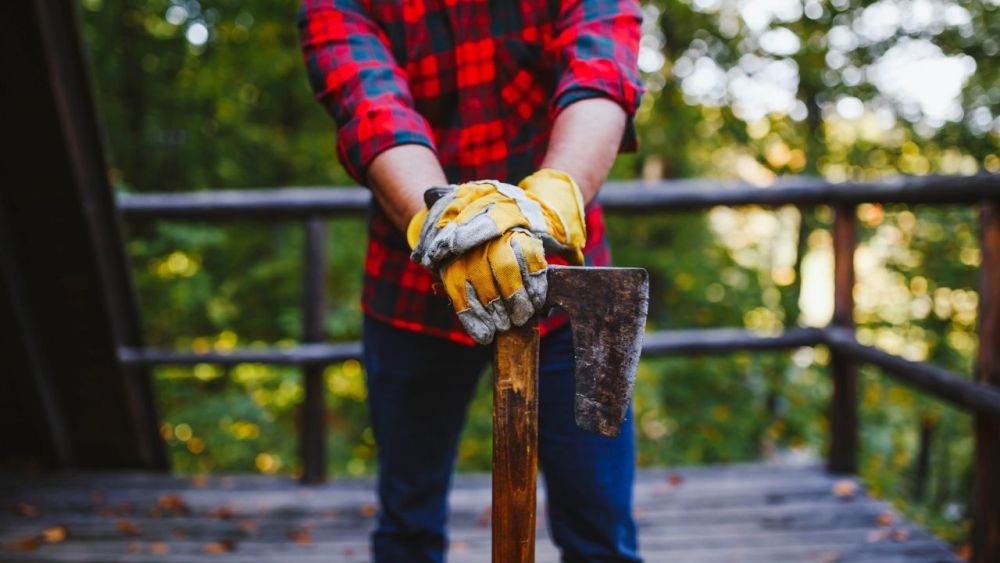
The most important axe skills you should master in the wilderness
👉 The key facts from this guide
- The axe is a versatile tool used for chopping, splitting, and carving wood.
- There are four basic axe skills: felling a tree with an axe, limbing with an axe, splitting logs with an axe, and chopping firewood with an axe.
- When felling trees, it is important to know the prevailing wind direction and gusts. Choose several escape routes. Things can go awry if a tree rebounds or becomes stuck in a neighboring tree during the fall.
- Limbing can be dangerous, as there is no safeguard to stop the axe once the limb is severed.
- Making firewood is one of the most essential skills for Bushcrafters and campers. It is necessary to know how to make a fire properly so you don't freeze while winter camping or have cold food.
Not many young boys in today's chainsaw generation have ever seen their grandpa fell a tree with his axe.
However, I can still vividly remember that time. I was maybe 5 or 6 years old, and my grandpa was felling a tree.
He swung the blade rhythmically against that tree, and the image has been etched as a childhood memory.
And over 30 years later, my interest in axes continues.
What are axe skills?
Axe skills are a set of abilities used for surviving in the wilderness. Axe skills are not limited to just camping, they can be applied to any survival situation. Whether for hunting, fishing, or just surviving a natural disaster.
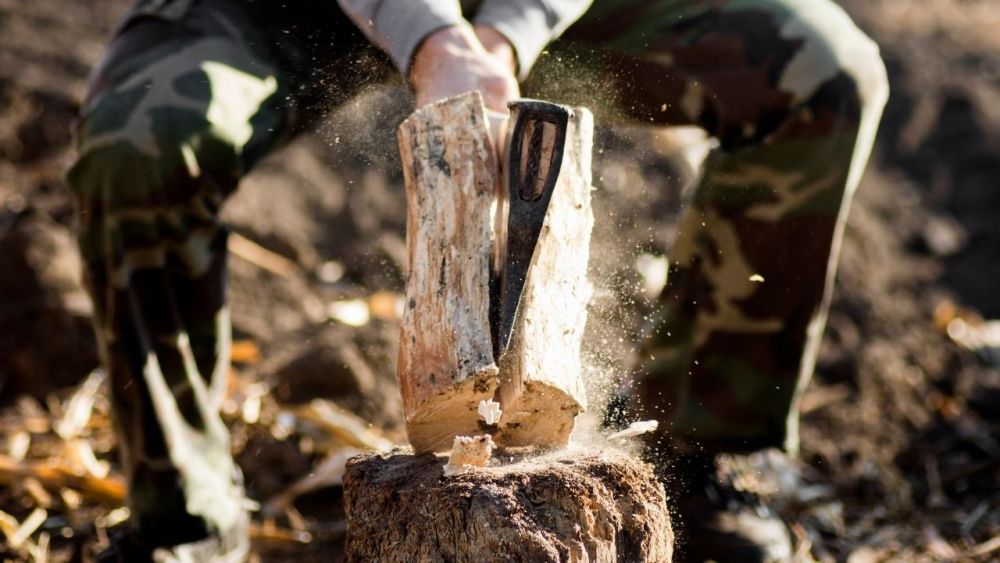
There is no such thing as the best axe skill for life, as every situation offers new challenges and opportunities that we must learn. We must adapt to achieve the best possible result.
Axe or chainsaw?
I'm not against chainsaws. I really like them – they're pretty useful. They let me work smoothly and without much effort.
But nothing beats a piece of steel at the end of a stick. When wielded skillfully by powerful individuals, it's a thing of beauty and joy.
The axe is the oldest and least appreciated, but invaluable tool. It serves not only as a survival tool in the wilderness, but also as a simple tool that connects your hands with a forgotten craft.
A chainsaw may be fast, but requires a lot of maintenance
The more complicated a machine is (like a chainsaw), the more likely you will need a small workshop in your basement.
To harvest wood with this machine, you will need to carry oil, gasoline, a gas can, files, and a wrench with you.
You will likely need another machine (a vehicle) to transport the chainsaw and the fuel just to reach your piece of forest with all of those things.
A sharp axe can be hung over your shoulder with a sharpening stone in your pocket.
That's it.
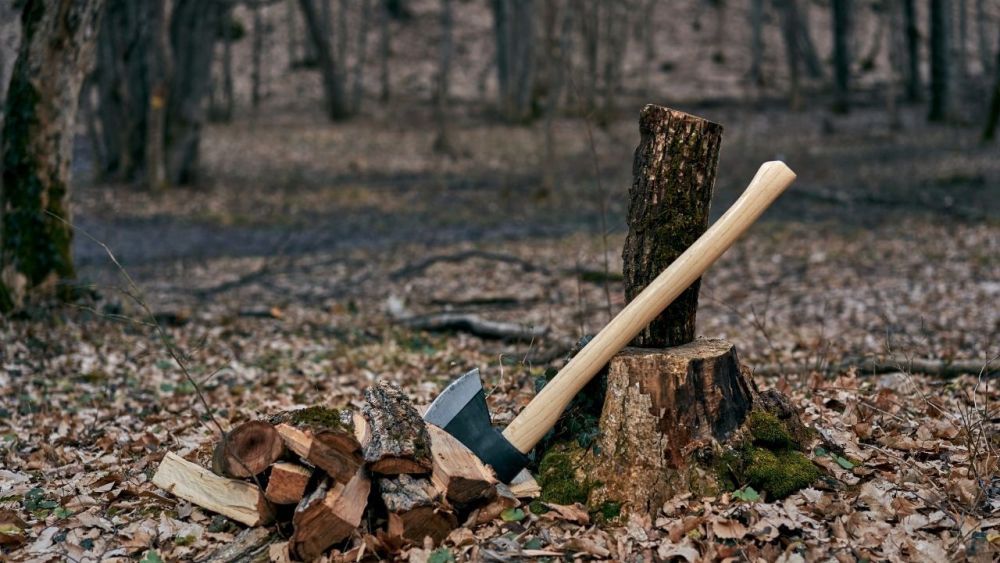
Even though combustion engines may run "forever", you'll never regret having the manual skill of using an axe.
Indigenous peoples, farmers, settlers, loggers, and craftsmen of old times knew the value of this tool and how to use it.
While some people see axes as hunting weapons, they are actually tools used for many tasks.
As with all tools, it's important to choose the right axe for the job you want to do (more on that later). There are many types of axes with different uses.
You may first think of the logger when it comes to axes. But there are many other professions that use axes or tools with similar functions, such as in a carpentry shop, a butcher shop, fighting fires, or for wood carving.
We're now focusing on felling, limbing, splitting, and cleaving with the axe.
Everyone should learn the following four basic axe skills. This will give you more independence.
1. Felling a tree with an axe
Without experience in felling trees, you should never lay an axe on a trunk that you cannot grip with one arm. Practice on smaller trees beforehand to improve your technique.
Warning: Even with some experience and a chainsaw, felling a tree remains a very dangerous undertaking.
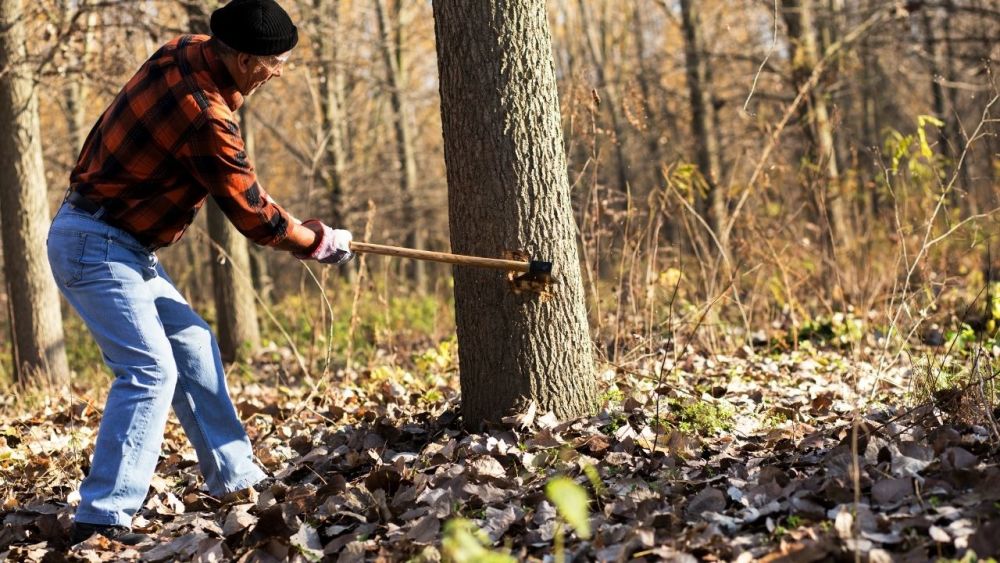
First, check the position and direction of fall
First, look at the tree and determine how it is leaning. Use your axe handle and use it as a plumb line to determine the inclination of the tree.
If the tree is not leaning, stand by the trunk and look up. Where are the most branches? The tree falls more easily in the direction where the branch work is the strongest and therefore the mass is the highest.
Then check where the tree will land on the ground. If there are any obstacles of any kind that the tree should not fall on, don't allow it.
These points will help you determine the location or path on which the tree will fall.
With the right tools (wedges, jacks, ropes), an experienced logger can almost make any tree fall in the desired direction.
However, it is much easier to fell a tree in the direction of its natural inclination.
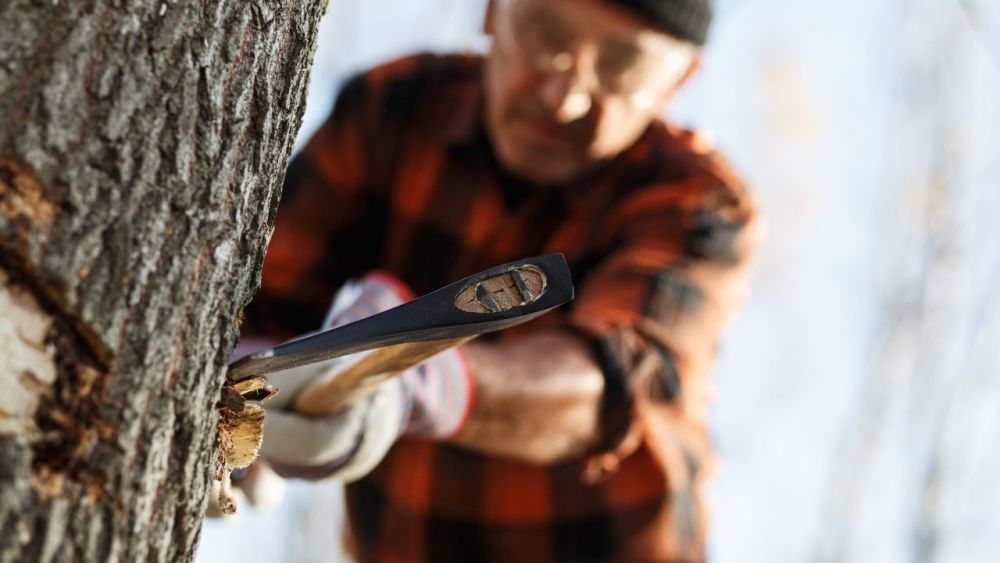
Before your first swing
- Visually inspect the tree for dead branches that could come loose and fall on you. Dead trees are great for firewood, but also pose a higher risk of branches falling as you chop. Looking up to see if something is falling can harm your eyes, so wearing protective eyewear is recommended.
- Clear the area to give yourself room to swing the axe properly. Remove anything that might get in the way, so that the axe won't get caught on anything.
- When felling trees, it's important to know the prevailing wind direction and gusts.
- Find several escape routes. Things can go wrong if a tree kicks back or gets caught in a neighboring tree when it falls. Take the time to plan and clear your routes. ALWAYS be prepared to drop everything and run.
Swinging posture
Okay, now you know which way your tree should fall. Next, determine the safe and unsafe zones.
Position your body so that it is not in front of or behind the felling notch. You should be standing beside the felling notch, once it's completed.
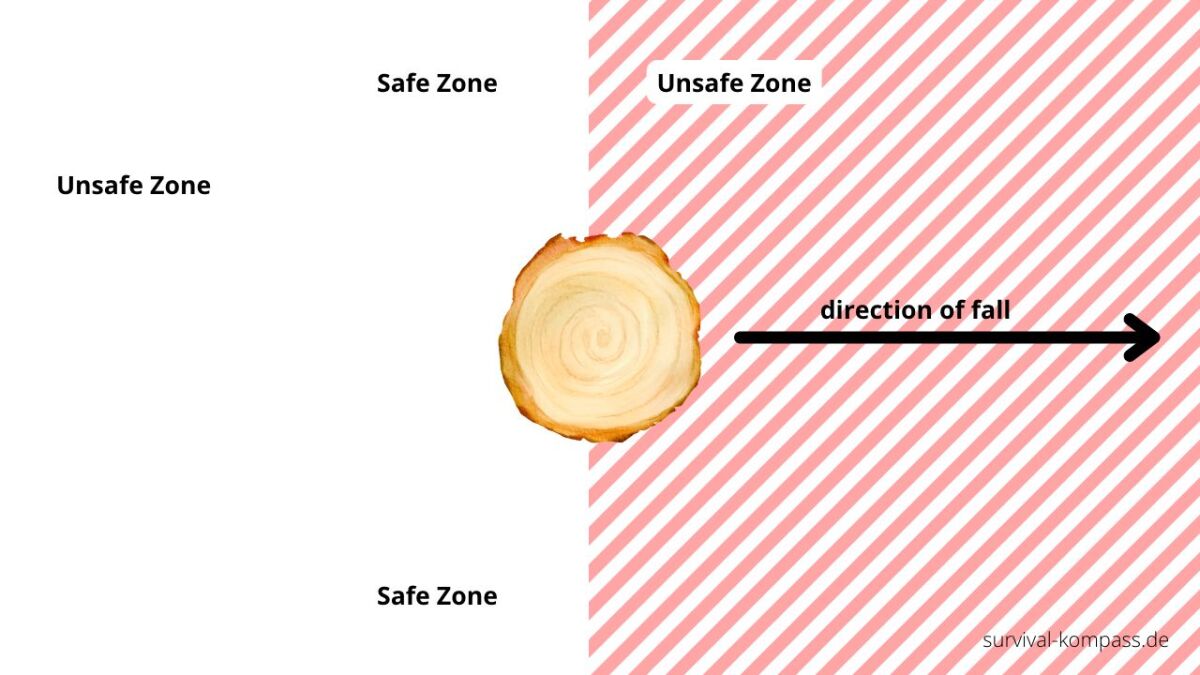
Warning: Never step in front of the felling notch! There is another unsafe zone behind the tree. You must not pass it once the notch is completed. When the tree falls, it may jump backwards.
Hacking the felling notch
Once you've determined the felling direction and safety zones, use your axe to mark the felling notch on the bark of the tree.
Now you can start hacking the felling notch. The notch should be hacked at approximately a 45-degree angle and go halfway (no more!) into the trunk. The underside of the notch must be as straight as possible.
Start hacking the tree trunk at a 45-degree angle. Hacking straight into the tree is pointless and won't get you very far.
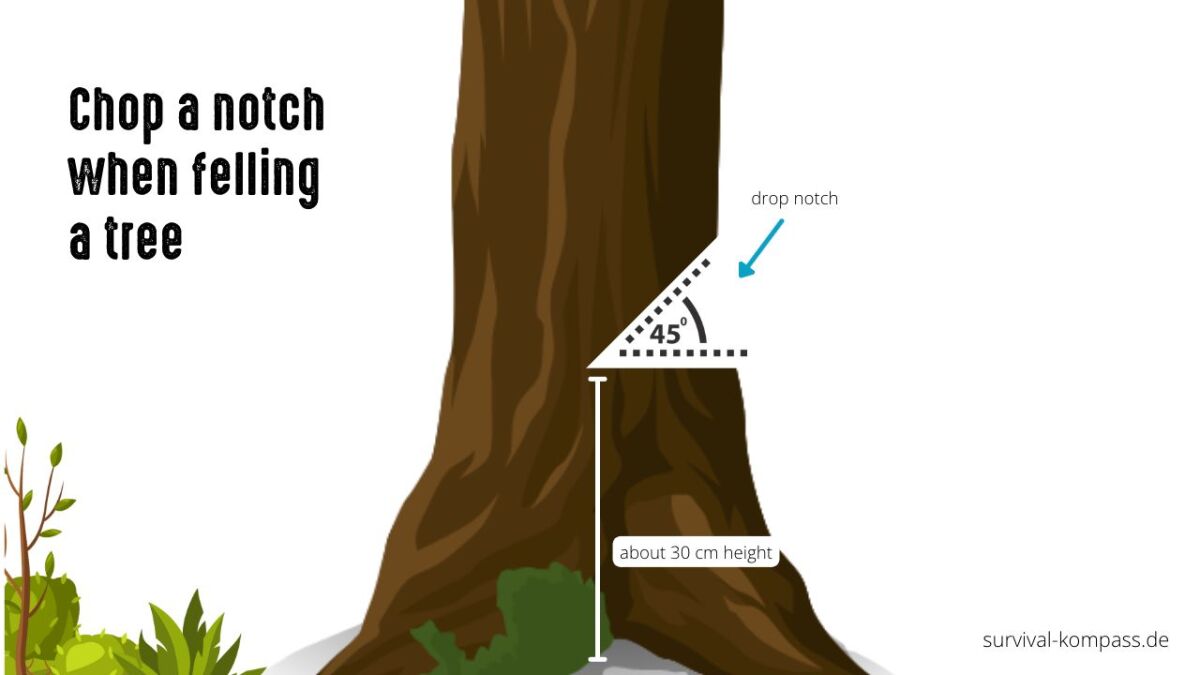
After hacking the tree trunk at a 45-degree angle several times, use some horizontal blows to remove material from the notch.
Repeat this process until the felling notch is completed.
Accuracy is more important than strength, power, and speed when it comes to the felling notch.
Now you've hacked a 45-degree felling notch about halfway into the tree. Time for the next notch.
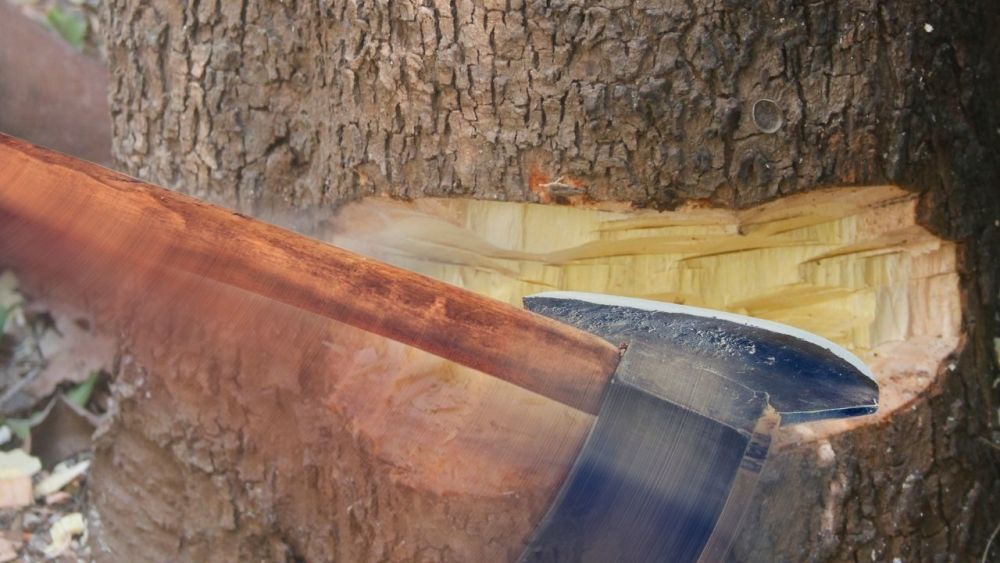
Cutting the felling cut
You can either saw or hack the felling cut. Let's start with sawing because it's a safe and nice way (especially for beginners).
You make the felling cut exactly on the opposite side of the felling notch. But be careful, you saw about 5 cm higher into the tree than the felling notch.
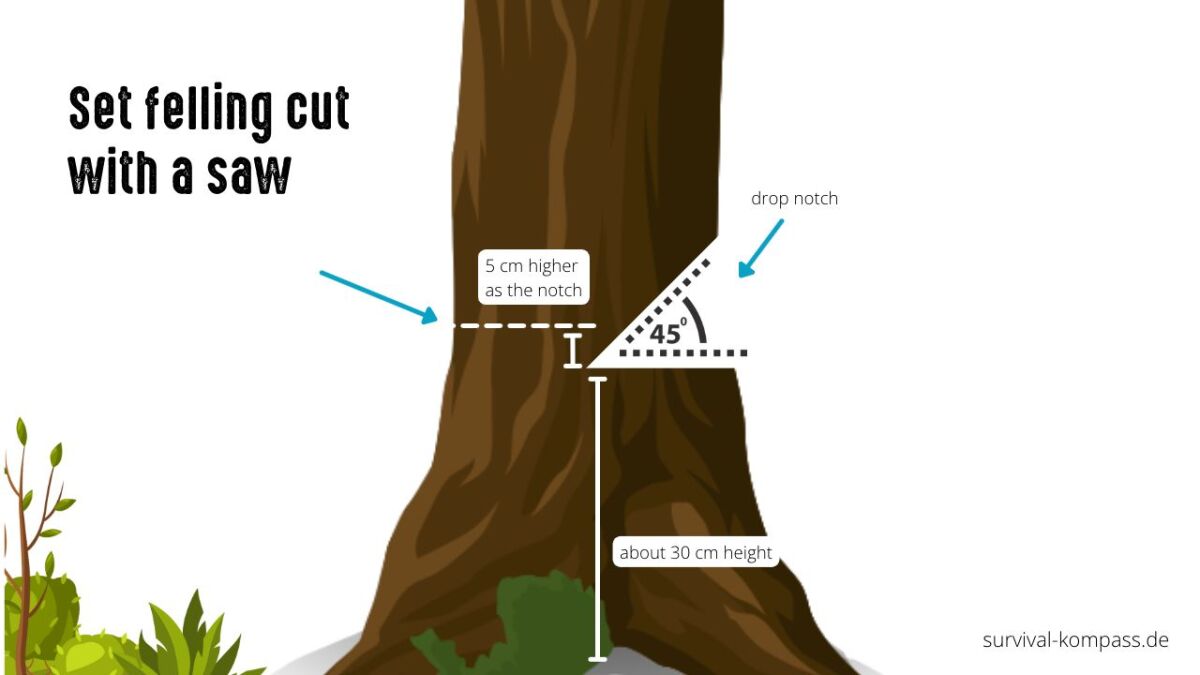
With the 5 cm difference in height, you create a hinge effect, causing the tree to fall securely in the desired direction. It's just physics.
Mark where you need to saw precisely with your axe or saw to stay on course.
When you start sawing, everyone should move to the safe zones. You never know when the tree will fall.
Of course, you should have a saw that can cut through the entire width of the tree.
First, saw a few centimeters around the felling cut or debark the tree beforehand.
Then, saw as straight as possible towards the notch. As you get closer to the notch with the saw, you will notice that the tree leans more and more.
From now on, you should be extremely careful because the tree can fall at any time. It will fall no later than about 5 cm before the notch.
P. S. A wedge can be very useful when sawing. It ensures that your saw does not get stuck and once again secures that the tree falls in the desired direction.
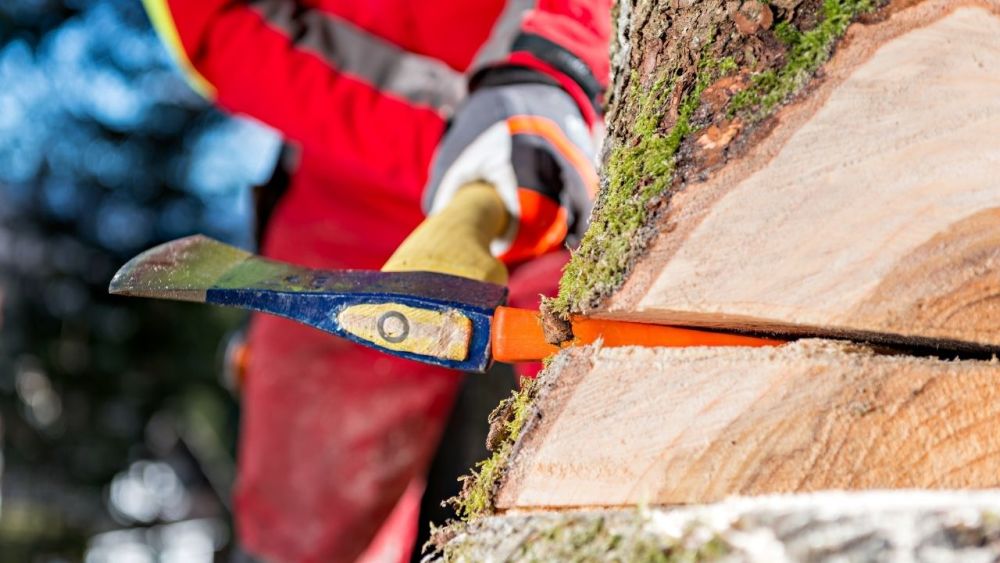
Hacking the Felling Cut
The felling cut is a smaller version of the notch. This cut should also be a 45º notch, with its height being 4-5 cm higher than the level of the notch.
This height difference creates a "hinge" between the two notches.
The hinge serves as a safety device to prevent kickback when the tree begins to fall.
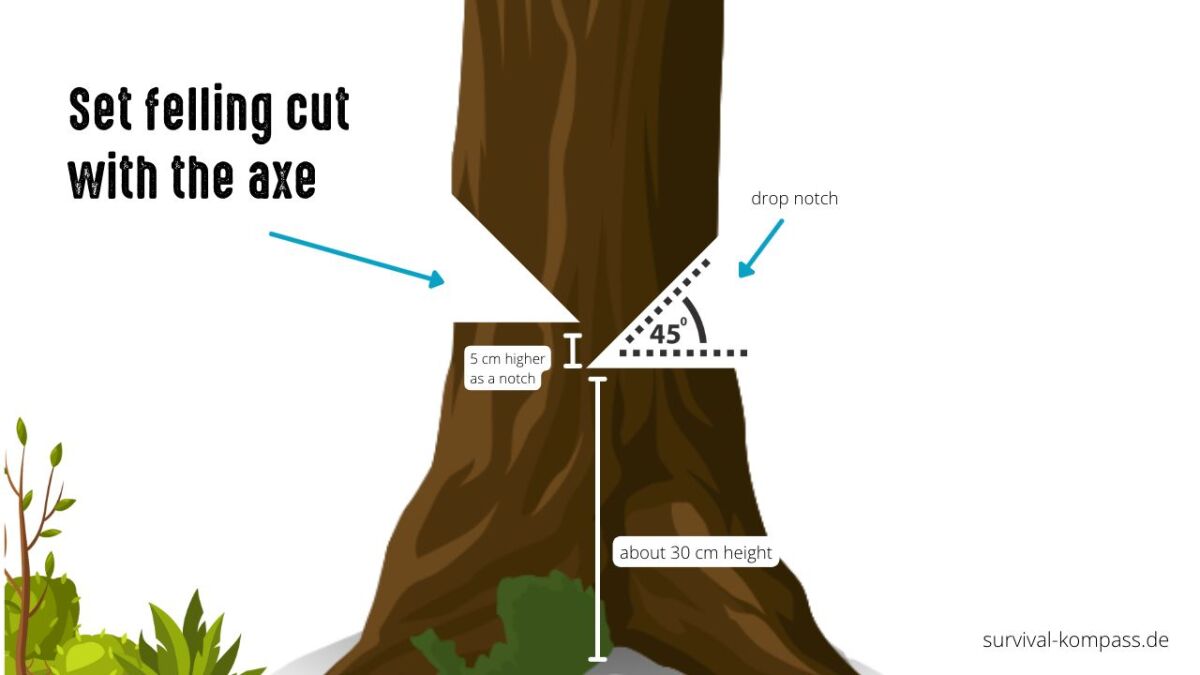
Even in trees with smaller diameters, the weight of the falling tree causes the base of the tree to be pushed backward.
It can be helpful to score the area of the felling cut again with your axe to get a precise target.
Use the same cutting movements as with the notch.
It is crucial that you remove the wood from the felling cut at equal intervals. Otherwise, there is a risk that the tree will not fall in the expected direction.
As you approach the front cut from behind, watch the movement of the tree. Once it starts to lean, you can push it manually in the direction of the fall.
Then it's time to get out of the way and let gravity do the work.
Furthermore, do not stand directly behind the falling tree. Move to a safe distance on both sides.
And be ready to drop your axe and run if necessary.
Here I found a great video of Bertram felling a thick tree with only an axe. It took him a total of 6 hours, and he also has a great technique for the felling cut.
2. Limbing with the axe
Limbing can be dangerous as there is no safety to stop the axe once it severs the limb.
When limbing side branches, do not stand astride the log – it's too dangerous. Stand beside the log with the limb to be removed between you and the log.
Here are some tips for safe limbing:
- Swing in a direction from the base (where you hacked) to the top of the fallen tree. This method removes the branch exit even at the trunk and leaves little to no remains (tip: pine trees often have fatwood here).
- Start by removing limbs from the top of the fallen tree to prevent interference when limbing side branches.
- After severing, remove the limbs from the log to prepare your work area for side limbing.
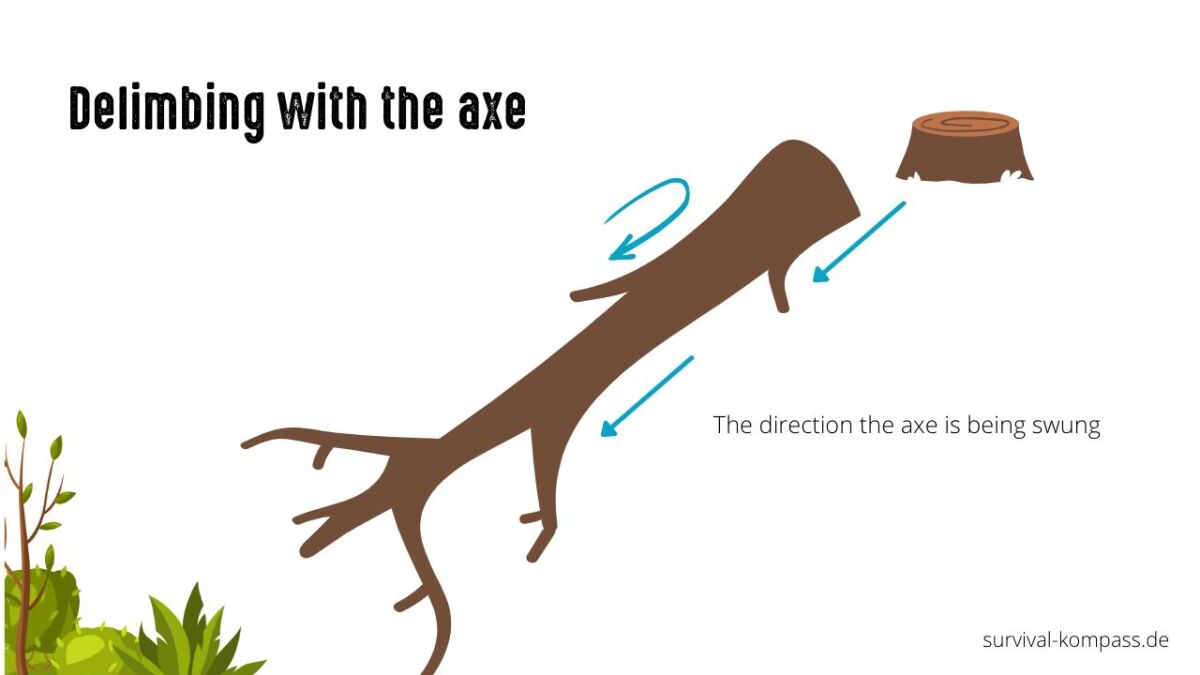
3. Splitting logs with the axe
Once your tree is felled and cut, it needs to be brought to camp. Whether that's your bushcraft camp or woodshed, it needs to be transported.
Splitting logs with the axe is the process of chopping tree logs into manageable lengths for transportation.
If you know the length of your axe, use it as a measuring tool to measure the log sections to be split.
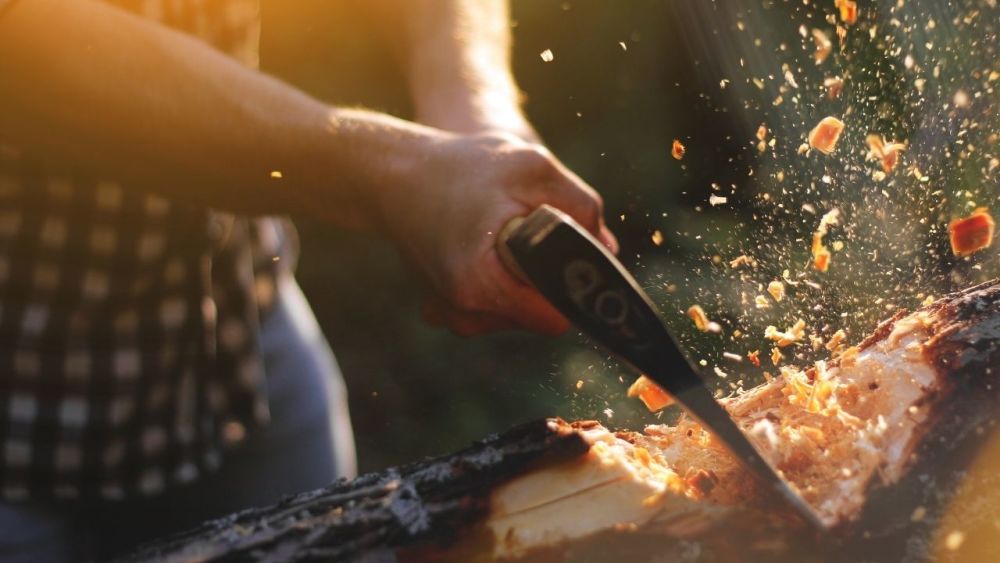
Tips for splitting:
- Use wooden wedges to prevent the log from rolling away.
- Option 1: I recommend this method for beginners because it is less dangerous. Stand in front of the log and chop a 45-degree notch (V-notch) into the mark until the log is half split. Then turn the log over and chop the V-notch from the opposite side.
- Option 2: I only recommend this if you have mastered option 1. Stand on top of the log. Spread your feet about shoulder-width apart, with slightly bent knees and hips. This posture is adjusted upwards or downwards depending on the length of your axe. Maintain your balance and swing accurately, starting to chop a V-notch here as well. Once the V-notch is in place, turn the log over. The two V-notches will meet in the middle of the log and the log will split.
Tip: The V-notch should be as wide as the diameter of the tree.
4. Splitting and chopping wood with an axe
Making firewood is one of the most important skills for bushcrafters and campers.
It's essential to know how to make a fire correctly, so you don't freeze while winter camping or your food stays cold.
Here I show you my three simple steps to making firewood.
Option 1: Classic splitting
Find a suitable chopping block and place it on a solid surface. Make sure it is stable and cannot tip or wobble.
Ideally, the sum of the chopping block and the wood to be split is approximately at the user's hip height.
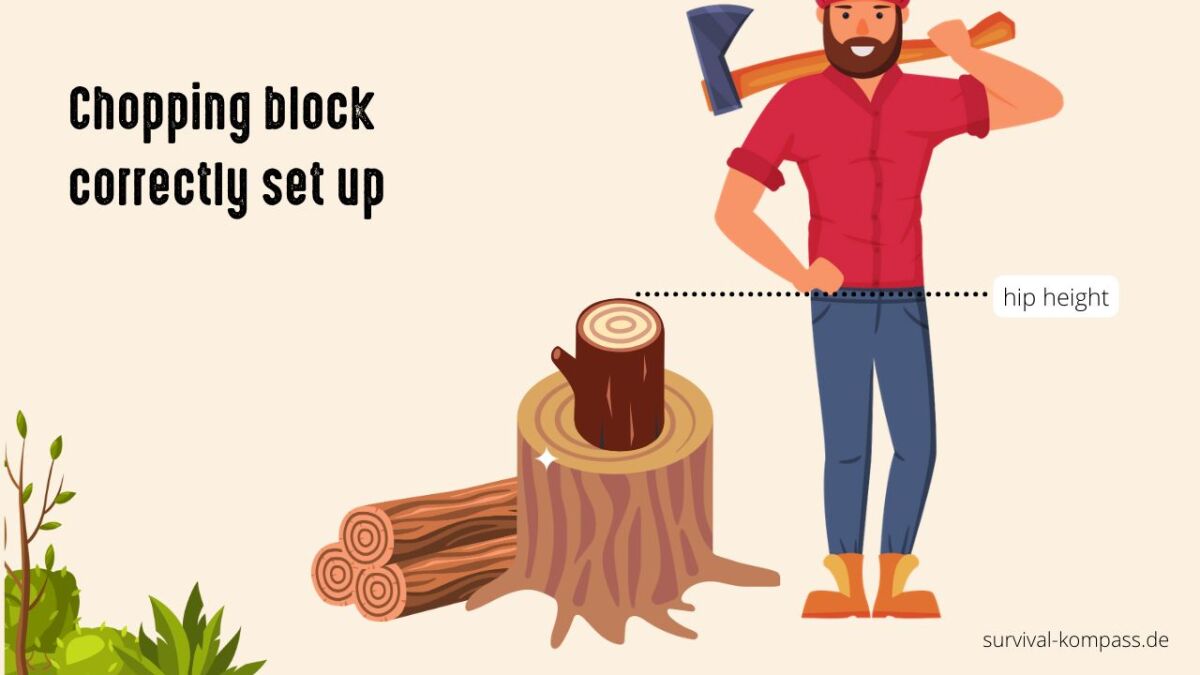
Then place the piece of wood in the center of the chopping block. Grip the handle of your axe with both hands and ensure a secure grip.
Swing the axe down from above onto the wood in a controlled manner, ideally so that the axe blade hits the chopping block straight.
If the chopping block is closer to the ground, go down on your knees while chopping so that the axe blade hits the chopping block straight here too.
Tip: Keep the axe parallel to the grain to split your wood cleanly, quickly, and safely.
Option 2: Splitting wood safely with this trick (for beginners)
I particularly like this option when no chopping block is available. However, you still need to find a solid surface, such as a tree trunk.
And the method works better with smaller axes and smaller logs.
Here's a video:
To achieve this, place the log parallel under your axe. Ideally, the axe blade and the end of the handle are on the log. Then hold everything firmly and strike the axe head on the solid surface.
This splits the wood step by step, and you don't need to swing the axe, which can be dangerous.

Option 3: Splitting wood without swinging the axe (for beginners)
This method is perfect if you're still afraid to swing an axe.
You need a solid base, your axe, and a stick (here I show you how to make a bushcraft hammer).
- Place the wood block on the chopping block
- Place the axe blade in the center of the wood block
- Then strike the axe head with the stick until the wood block splits
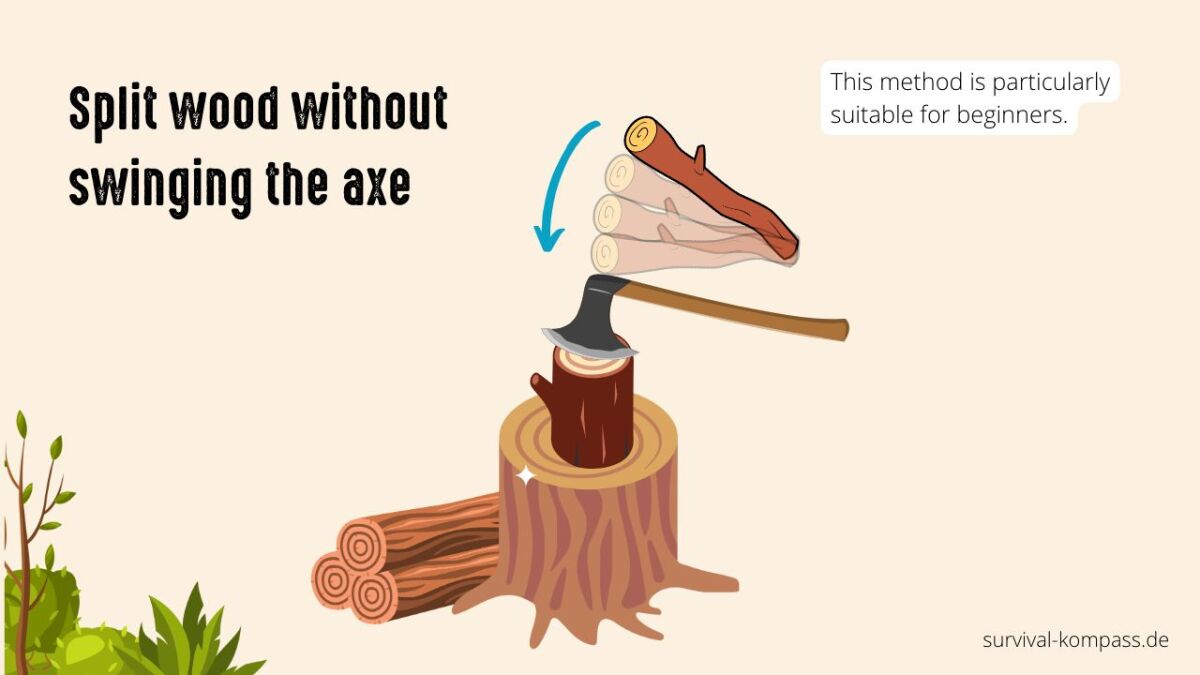
P. S. You can also use this method with a knife if you forget your axe and need firewood. Learn how to do it and why it's called Batoning here.
How to strengthen your axe skills in a few simple steps
The axe is a versatile tool used for chopping, splitting, and carving wood. It's also a great companion for outdoor activities such as camping, bushcraft, and survival.
The most important thing: take it slowly, as the axe is also a dangerous tool. You require time and practice to learn all the skills.
These are the steps I used to expand my axe skills, and it helped me a lot.
- Practice, practice, practice!
- Identify your weaknesses and focus on improving them.
- Use the exercises in this guide to work on specific areas.
So don't worry if you're not good at it yet - just keep practicing!
Safety tips when felling a tree with an axe
Before we get started, we cannot neglect the safe use of the axe.
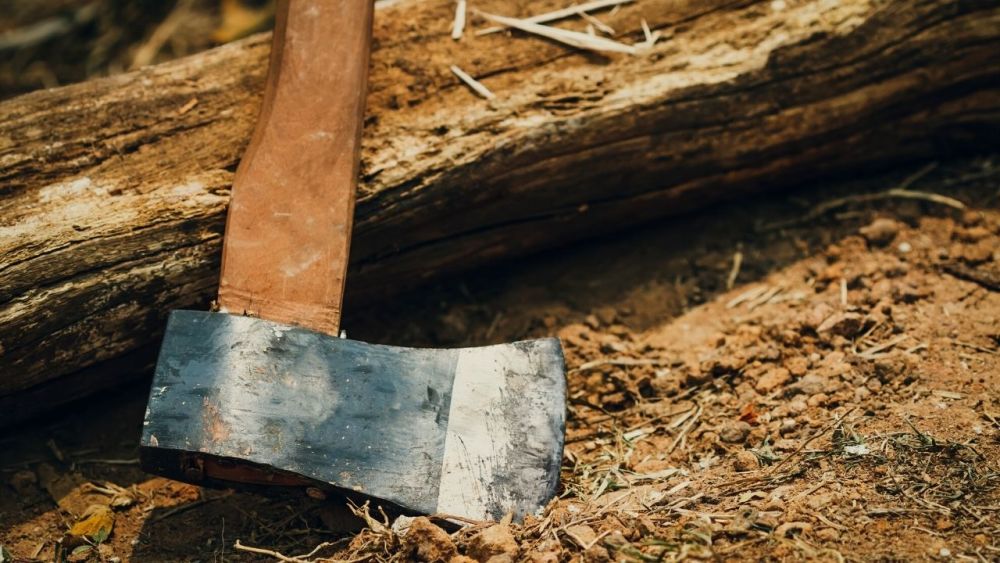
Below are the safety guidelines for using an axe:
- Inspect your axe before each use. The head or handle must not be damaged.
- The handle must be firmly attached to the head.
- Keep your hands away from the blade when using the axe.
- Never use an axe when you're tired or rushing.
- Don't use an axe when it's getting dark or is dark.
- If possible, wear safety glasses and shoes when working with an axe.
- When you're done working, store the axe safely and use a sturdy axe sheath.
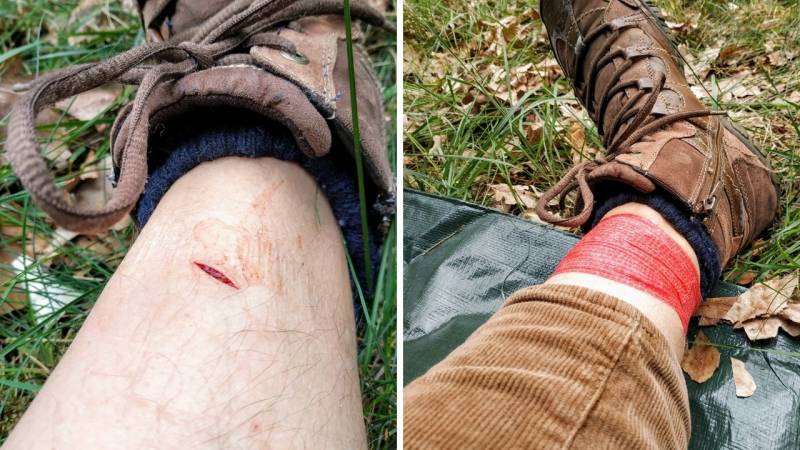
Which axe should I use to fell a tree?
If you want to fell a tree, you should use either a forestry axe or a felling axe.
A splitting axe would be too heavy and too blunt to be used effectively. A hatchet is too small and has too little weight to swing and wind up properly.
I recommend the following axes:
If you're looking for a survival axe, refer to my guide "The 3 Best Survival Axes (Presentation + Pictures)".
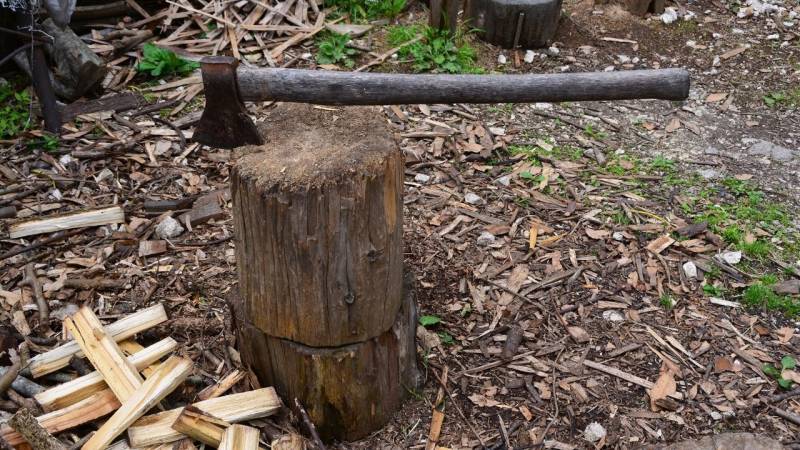
How do I walk safely with an axe?
The best way is to hold the axe directly under the head of the axe on the handle. The axe head points downwards, which is safer.
You do this so that your arm is extended. This causes the axe to fall immediately downwards if you stumble, and it doesn't rotate or fall from a high position.
Another important thing to remember is that you should never carry the axe over your back or swing it wildly – this can lead to serious injuries.
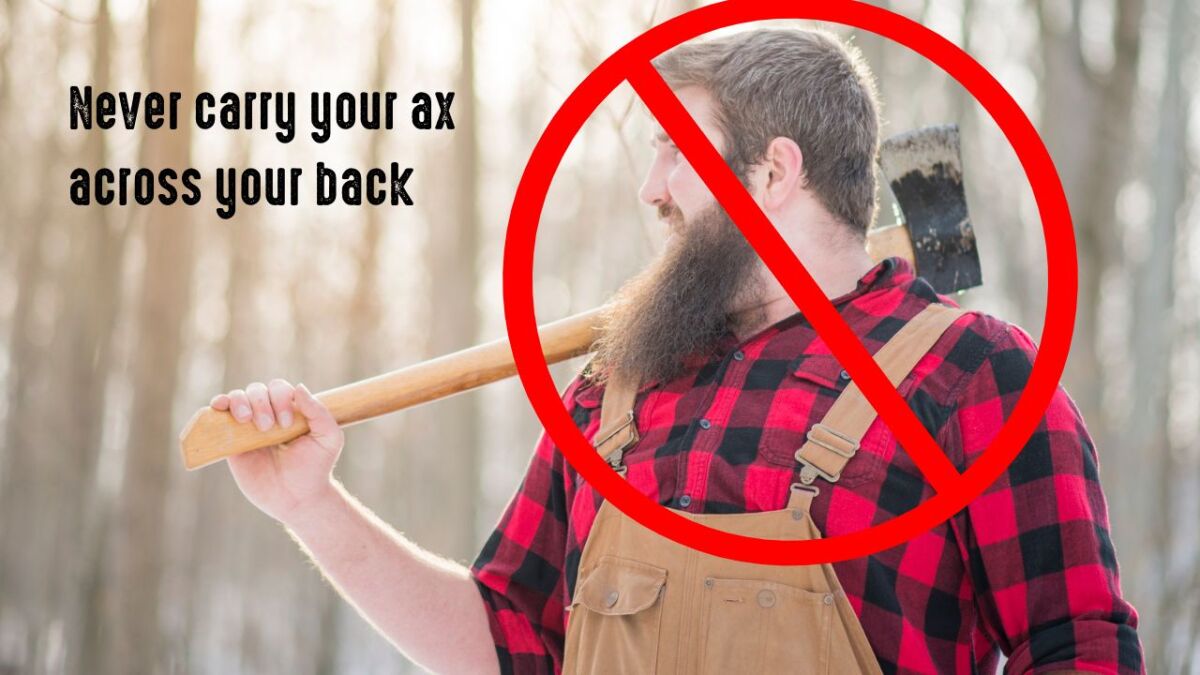
Now tell me in the comments, which axe skill is most significant to you? Do you enjoy handling the axe?


Author of the guide
Martin Gebhardt
Hey, I'm Martin. On my blog, you will learn the basics and numerous details about living in the wild. I think survival, bushcraft and the good life in nature are the keys to happiness. Find me here on Instagram or on YouTube. You can find more about my mission on the About Me page.
Was this guide helpful?
42 people found this guide helpful.
5.00 out of 5 points (42 Ratings)
Comments (0)
This post may contain affiliate links. So if you click on the links and make a purchase, I will receive a small commission at no additional cost to you. Click here, to learn more about it.


